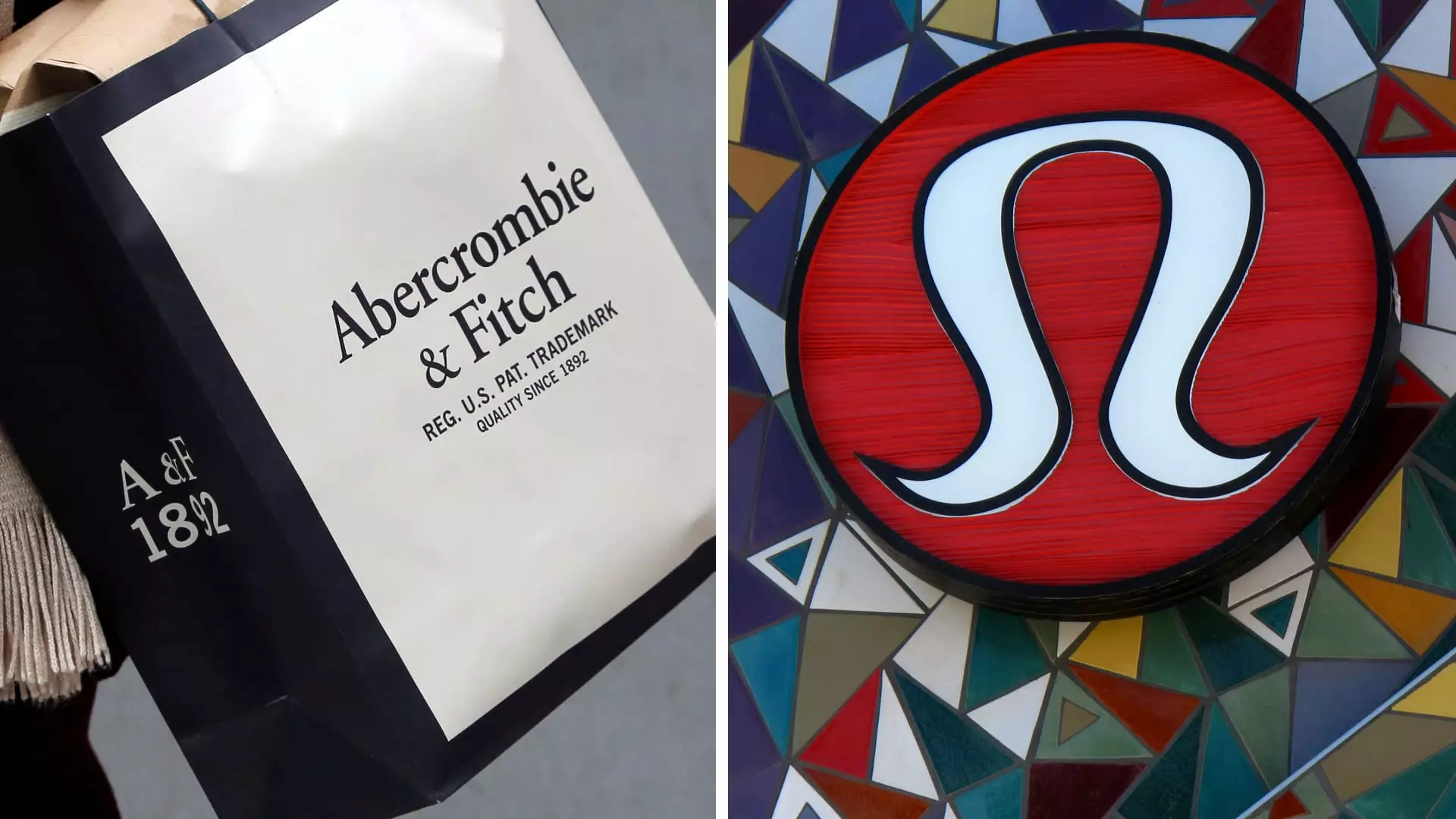The holiday season is a crucial period for retailers, often determining their financial health for the coming year. This year, several prominent names, including Lululemon, Abercrombie & Fitch, and American Eagle, posted better-than-expected early holiday results, reinforcing the resilience and adaptability of the retail sector. However, despite these optimistic outlooks, many companies saw their stock prices decline, sparking discussions on investor confidence and market trends in a post-pandemic economy.
Lululemon has emerged as a standout performer in this season’s retail landscape. The company revised its fourth-quarter sales projections upward, anticipating growth between 11% and 12%, which translates to approximately $3.56 billion to $3.58 billion. This rise came on the back of a robust consumer response to their offerings during the holiday shopping frenzy. Additionally, Lululemon also improved its profit outlook, with earnings per share forecasted to hit between $5.81 and $5.85, an uptick from earlier estimates. These favorable indicators showcase the brand’s successful marketing strategies and customer engagement efforts.
Conversely, Abercrombie & Fitch’s results indicate a more cautious trajectory. While the company adjusted its net sales growth outlook for the holiday quarter upwards, it is noteworthy that this signal was not as powerful as previous years, prompting concerns about the sustainability of its previous growth rates. Retail analysts assert that a slowdown was somewhat inevitable given that Abercrombie is now navigating tougher comparative metrics from last year’s exceptional performance.
The initial excitement around positive earnings forecasts quickly fizzled with declining stock prices across the board for these retailers. Abercrombie, in particular, saw its stock plunge nearly 20% on speculation that their rapid growth may have peaked. This sentiment was underscored by fears among investors about market saturation and the company’s ability to maintain robust sales growth after a period of rapid expansion.
Lululemon’s stock, despite its strong outlook, also experienced declines. The market’s reaction was curious, as it revealed a rift between impressive quarterly numbers and the broader investor concerns about future growth sustainability across the retail sector. As the retail landscape evolves, particularly in the wake of rising inflation and changing consumer preferences, investors are taking cautious stances, prioritizing long-term outlooks over short-term gains.
Not all retailers are enjoying positive outlooks. Macy’s, a staple in the American retail scene, revealed disappointing early holiday results and now expects sales to be slightly below initial projections. This deterioration in expectations underscores the ongoing challenges faced by traditional department stores in an era where e-commerce is king. The anticipated decline in sales for Macy’s indicates a broader malaise affecting many established retailers struggling to adapt to modern shopping habits.
Urban Outfitters and American Eagle also revealed complex narratives within their early holiday performances—while Urban Outfitters recorded notable sales growth overall, certain segments of its brand portfolio struggled to keep pace with their faster-growing counterparts. Meanwhile, American Eagle raised its fourth-quarter profit expectations, yet still anticipates revenue declines due to a shorter fiscal calendar impacting product availability. This indicates the multifaceted challenges retailers face; while some experience growth, others grapple with stagnation.
Looking ahead, the distinct dichotomy between strong retail performance numbers and investor apprehension underlines the transitional phase of the retail industry. Industry analysts predict a moderate growth trajectory amid lingering inflation and consumer wariness. The National Retail Federation’s projection of 2.5% to 3.5% sales growth reflects a tangible shift from the explosive demand seen in previous years.
Despite these challenges, early holiday data hint that consumers may still be willing to spend, albeit these spending patterns could be evolving. As retailers brace for the implications of these trends, the focus will likely shift to profit margins, customer loyalty, and brand sustainability rather than sheer sales numbers.
While some retailers boast positive holiday performance and increased sales outlooks, the overall market remains a complex tapestry of cautious optimism. For businesses looking to thrive, the path forward will necessitate agility and a keen understanding of both consumer behavior and economic realities.

Leave a Reply